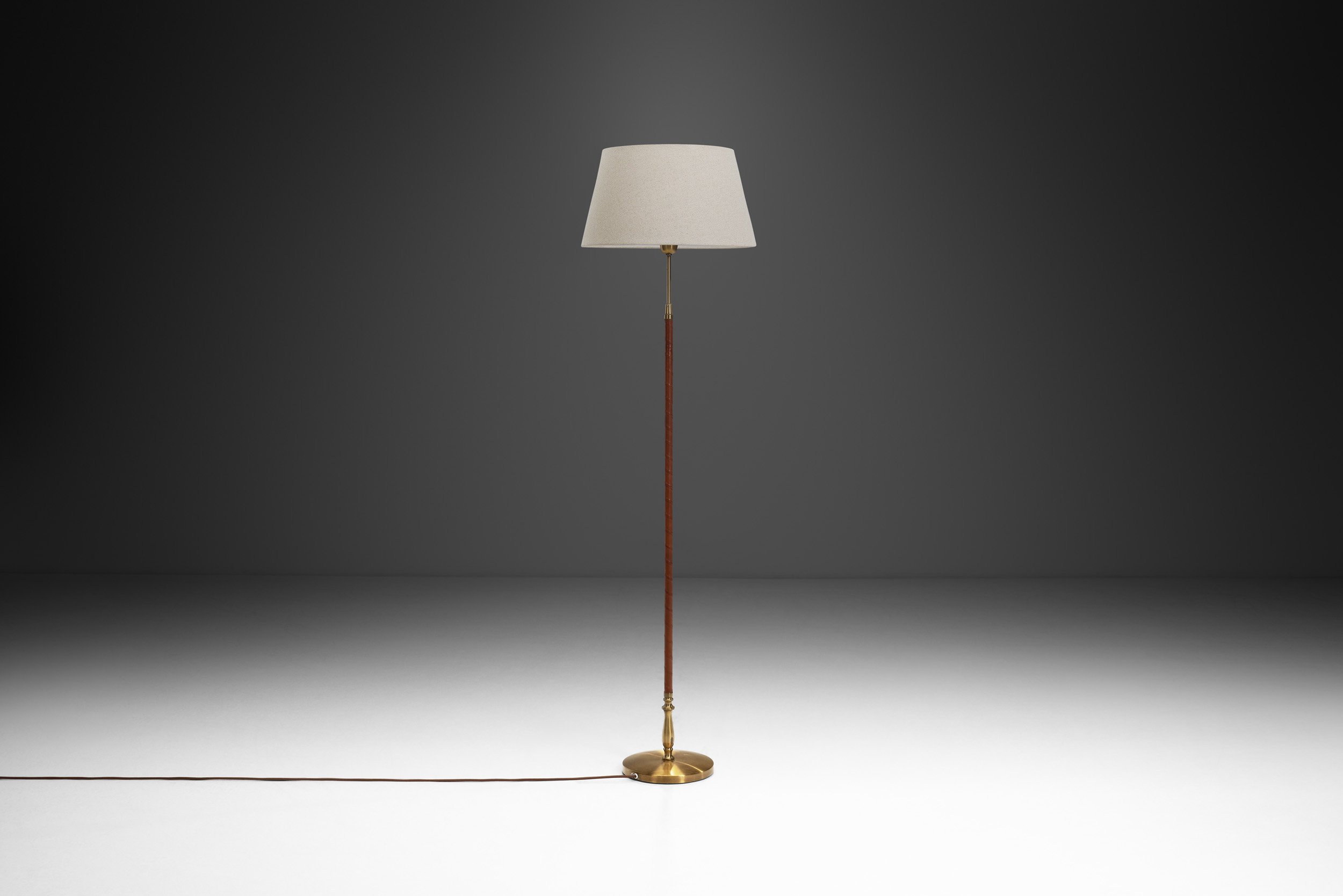Alvar Aalto “Angel Wing” Floor Lamp for Valaistustyö Ky, Finland 1954 (sold)

















Alvar Aalto “Angel Wing” Floor Lamp for Valaistustyö Ky, Finland 1954 (sold)
Originally designed by Alvar Aalto for the National Pensions Institute in Helsinki in 1954, the A805 model, better known as the “Angel Wing” floor lamp, is a true modern icon.
The A805's asymmetrical louvred shade is reminiscent of wings, which is why it became commonly known as the “Angel Wing” floor lamp. The cascading shade is even more emphasized when the lamp is lit. The hand-riveted shade is formed from lacquered, thin metal strips, diffusing the light evenly, both upwards and through its white painted strips. The white painted shade is contrasted by the polished brass collar and the black leather-wrapped stand which was hand-sewn in Finland.
Founded in 1952 in Helsinki, Valaistustyö Ky has been the main manufacturer of luminaires designed by Alvar Aalto since its establishment. The stem of the lamp is engraved with the mark: Valaistustyö A805, which shows that this is on older version of the lamp and not a later reproduction by Artek.
SOLD
Condition:
In vintage condition. Wear consistent with age and use. The shade has its original paint with some small retouches, some small stains. Leather and brass have minor wear.
Dimensions:
20.48 in W x 13.78 in D x 67.72 in H
52 cm W x 35 cm D x 172 cm H
Literature:
Alvar & Aino Aalto Design, Collection Bischofsberger, Kellein, Hatje Cantz, 2005, p. 186 and 187
About the designer:
Hugo Alvar Henrik Aalto, (1898, Kuortane, Fin., Russian Empire - 1976, Helsinki, Fin.) was a Finnish architect, city planner, and furniture designer. Aalto achieved an international reputation as a furniture designer and architect. Through his more than 200 buildings and projects, ranging from factories to churches, (a number of them built outside Finland), Aalto remains the most renowned Finnish architect and designer.
Alvar Aalto’s architectural studies at the Technical Institute of Helsinki were disrupted by the Finnish War of Independence, in which he also participated. Ultimately, he graduated in 1921 and began working in Jyväskylä, in central Finland. In 1927 Aalto moved his studio to Turku, and in 1933 to Helsinki, where he collaborated with his wife, Aino Marsio until 1949.
The first experiments with furniture date from the early 1930s, when he took charge of the interior of the Paimio Sanatorium. At the time, Aalto’s furniture was known for its use of laminated wood and original, structural forms. In 1935 the Artek Company was established by Aalto and Maire Gullichsen, the wife of the industrialist and art collector Harry Gullichsen, to manufacture and market his furniture. His distinctive style is a blend of modernist refinement and indigenous materials, which eventually earned him world-wide recognition.
Throughout his long career, Alvar Aalto received several prizes and honours. He was a member of the Academy of Finland (Suomen Aketemia) and was its president from 1963 to 1968 as well as a member of the Congrès Internationaux d’Architecture Moderne from 1928 to 1956. In 1957, he received the Royal Gold Medal for Architecture from the Royal Institute of British Architects and the Gold Medal from the American Institute of Architects (1963).
Today, the Alvar Aalto Museum keeps the legacy of the designer alive. It was designed by Aalto himself, and is located in the Finnish town of Jyväskylä. ~H.










